
Payroll Accounting Course
- Subject:
- Business and Communication
- Material Type:
- Full Course
- Author:
- Lumen Learning
- Date Added:
- 12/04/2018

Payroll Accounting Course
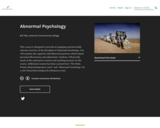
This course is designed to provide an engaging and personally relevant overview of the discipline of Abnormal Psychology. You will examine the cognitive and behavioral patterns which impair personal effectiveness and adjustment. Students will provide much of the substantive content and teaching presence in this course. Additional content has been curated from "The Noba Project (http://nobaproject.com/)" and "Abnormal Psychology: An e-text! (http://abnormalpsych.wikispaces.com/).
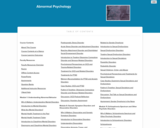
This comprehensive, ready-to-adopt Abnormal Psychology course provides thorough coverage of topics from The Diagnostic and Statistical Manual of Mental Disorders, Fifth Edition (DSM-5). Students learn about all of the major psychological disorders and examine the etiology, epidemiology, and treatment methods related to each. The course includes frequent examples, case studies, videos, and practice opportunities to foster application and critical thinking.
Module 1: Understanding Abnormal Behavior
Module 2: Research and Ethics in Abnormal Psychology
Module 3: Etiology and Treatment of Mental Disorders
Module 4: Anxiety Disorders
Module 5: Obsessive-Compulsive Disorder and Stress-Related Disorders
Module 6: Somatic Symptom Disorders and Dissociative Disorders
Module 7: Mood Disorders
Module 8: Eating, Elimination, and Sleep-Wake Disorders
Module 9: Substance-Related and Addictive Disorders
Module 10: Sexual Deviations and Dysfunctions
Module 11: Schizophrenia
Module 12: Personality Disorders
Module 13: Disorders of Childhood and Adolescence
Module 14: Neurocognitive Disorders
This course is built from a variety of open educational resources including OpenStax Psychology and NOBA Psychology. The course was developed with the help of a dedicated team of psychologists and practitioners. Authors and contributors include:
Amber Gilewski, Tompkins Cortland Community College
Anton Tolman, Utah Valley University
Christina Hicks, MS, CRC
Jessica Traylor, Gordon State College
Julie Manley, Coppin State University
Julie Lazzara, Paradise Valley Community College
Margaret Krone, Graduate Research Assistant, University of Massachusetts Amherst
Robert (Bob) Hoople, SUNY Oneanta
Sonja Ann Miller, Hudson Valley Community College
Wallis Back, Glendale Career College
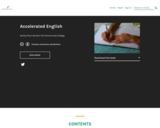
Table of Contents:
I. Unit 1: Introduction to the Course
II. Unit 2: Writing Process
III. Unit 3: Writing Structure
IV. Unit 4: The Literary Analysis
V. Unit 5: Peer Editing Workshops
VI. Unit 6: Practice Exam Materials
VII. Unit 7: The Research Process
VIII. Unit 8: The Illustration/Example Essay
IX. Unit 9: The Narrative Essay
X. Unit 10: The Final Project and Portfolio
Also available here: https://courses.lumenlearning.com/atd-bhcc-acceleratedenglish/

In Accounting for Managers, students learn the basic accounting principles needed to effectively make business decisions as a manager. The course begins with a review of basic math and accounting principles, ensuring students are prepared for the material that follows. Students will learn how to make financial decisions, including decisions around budgeting, financial statements, and cost and profit analysis.
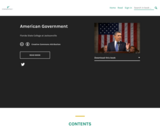
Table of Contents:
I. Module 1: Politics and Government
II. Module 2: Constitutional Framework
III. Module 3: American Federalism
IV. Module 4: Congress: To the Republic
V. Module 5: The Presidency: Design and Evolution
VI. Module 6: The Bureaucracy: Outputs of Government
VII. Module 7: The Courts: Guardians of the Constitution
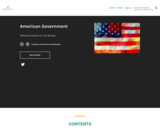
This course is taught using a mastery approach. It was designed to give you the best opportunity for success. Your instructor will guide you through the process, but below are some important things to keep in mind as you begin.
Course Structure: Each course is built around Competencies, which are important skills or knowledge that can be used in the real world. Each Competency has enabling Learning Outcomes that teach you what you need to know to master the Competency. Each Learning Outcome is supported by Open Educational Resources, which are a range of materials that will help you build your skills and knowledge of the learning outcomes.
Table of Contents:
I. Introduction
II. Chapter 1: Constitutional Framework
III. Federalism
IV. Ch. 2 Civil Rights and Liberties
V. Ch. 3 - The Legislative Branch
VI. Ch. 4 - The Executive Branch
VII. Ch. 5 - The Judicial Branch
VIII. Ch. 6 - Political Culture and Public Opinion
IX. Media and Politics
X. Ch. 7 - Political Parties and Interest Groups
XI. Ch. 8 - Elections
XII. Public Policy
XIII. Course Information
XIV. Research Paper Assignment
XVI. How to Participate in Seminars
XVII. Culminating Survey
XVIII. Seminars on Textbook Chapters
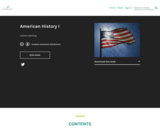
Table of Contents:
Module 1: New World Encounters
Module 2: New World Experiments
Module 3: Putting Down Roots
Module 4: Experience of Empire
Module 5: The American Revolution
Module 6: The Republican Experiment
Module 7: Democracy & Dissent
Module 8: Republican Ascendancy
Module 9: Nation Building & Nationalism
Module 10: The Age of "Jacksonian Democracy"
Module 11: Southern Society Before the Civil War
Module 12: Northern Society Before the Civil War
Module 13: An Age of Expansionism
Module 14: Sectional Crisis
Module 15: Secession & Civil War
Appendices
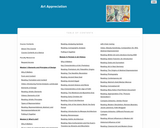
This course is particularly focused on helping you develop visual literacy skills, but all the college courses you take are to some degree about information literacy. Visual literacy is really just a specialized type of information literacy. The skills you acquire in this course will help you become an effective researcher in other fields, as well.
E-book version available here: https://library.achievingthedream.org/herkimerartappreciation/

SUNY’s “Art History and Appreciation I” that was developed by Lumen Learning.
Module 1: Introduction
Module 1 Overview
Key Learning Items
Common Questions about Dates
A Beginner's Guide to the History of Western Culture
Why Look at Art?
The Skill of Describing
Patronage and the Status of the Artist
Glossary of Art Terms
External Resource
Module 2: The Birth of Art
Module 2 Overview
Key Learning Items
Prehistoric Art: Paleolithic Origins
Nude Woman (Venus of Willendorf)
Paleolithic Art Explained
The Neolithic Revolution
Jericho
Çatal Höyük
Stonehenge
External Resources
Module 3: The Ancient Near East
Module 3 Overview
Key Learning Items
Ancient Near East
Sumerian Art
The Invention of Writing
The Standard of Ur
Ziggurat of Ur
Art of Akkad and Ur
Victory Stele of Naram-Sin
Theories on the Meaning of the Victory Stele of Naram-Sin
Law Code of Hammurabi
Assyrian Art
Lamassu
Neo-Babylonian Art
Art of the Persian Empire
External Resources
Module 4: The Art of Ancient Egypt
Module 4 Overview
Key Learning Items
Ancient Egypt
Egyptian Art
Materials & Techniques
Seated Scribe
The Great Pyramids of Giza
Pyramid of Khufu
Pyramid of Khafre and the Great Sphinx
Pyramid of Menkaure
House Altar (Amarna Period)
Portrait Head of Queen Tiye
Bust of Nefertiti
Ramesses II
External Resources
Module 5: The Art of Ancient Greece—Part I
Module 5 Overview
Key Learning Items
Aegean Prehistoric Archaeology
The Early Aegean (3000–700 BCE)
Geometric Greek Krater
Black Figure Amphora
Niobid Painter, Attic Red Figure Calyx-Krater
New York Kouros
Spear Bearer
The Greek Temple
East and West Pediments, Temple of Aphaia
Myron, Discus Thrower
The Parthenon
Parthenon's East Pediment
Parthenon Frieze
Parthenon Metopes
Erechtheion
External Resources
Module 6: The Art of Ancient Greece—Part II
Module 6 Overview
Key Learning Items
Lysippos: Farnese Herucles
After Praxiteles, Venus
Barberini Faun
Dying Gaul
Nike of Samothrace
The Pergamon Altar
Boxer at Rest
Alexander Mosaic
Laocoön and his Sons
Eros Sleeping and an Old Market Woman
** Petra: An Introduction
Petra: Rock Cut Facades
** Petra: Urban Metropolis
External Resources
Module 7: The Art of the Etruscans
Module 7 Overview
Key Learning Items
Etruscan Art
Sarcophagus of the Spouses
Etruscan Necropolises
Etruscan Art Explained by the Met
External Resources
Module 8: The Art of Ancient Rome—Part I
Module 8 Overview
Key Learning Items
Ancient Rome
Digging Through Time
Temple of Portunus
Veristic Male Portrait
The Pantheon
Augustus of Primaporta
Painted Garden
Head of Augustus
Ara Pacis
Villa of Mysteries
Colosseum
External Resources
Module 9: The Art of Ancient Rome—Part II
Module 9 Overview
Key Learning Items
Arch of Titus
Hadrian's Villa
Maritime Theater, Hadrian's Villa
Pair of Centaurs
Column of Trajan
Medea Sarcophagus
Equestrian Sculpture of Marcus Aurelius
Ludovisi Battle Sarcophagus
Tetrarchs
Arch of Constantine
Colossus of Constantine
External Resources
Module 10: Early Christian Art
Module 10 Overview
Key Learning Items
Introduction to Early Christianity
Early Christian Art
After Constantine
Santa Maria Antiqua Sarcophagus
Santa Pudenziana
Sarcophagus of Junius Bassus
Santa Sabina
Santa Maria Maggiore
Mausoleum of Galla Placidia
External Resources
Module 11: Early Medieval, Carolingian and Ottonian Art
Module 11 Overview
Key Learning Items
Early Medieval Art
Fibulae
Sutton Hoo Ship Burial
Medieval Manuscripts
The Bestiary
The Lindisfarne Gospels
Carolingian Art
Lindau Gospels Cover
St. Michael's Church
External Resources
Module 12: Byzantine Art
Module 12 Overview
Key Learning Items
San Vitale
Iconoclasm
Hagia Sophia
Ivory Panel with Archangel
Icon of Saint George
Icon of the Triumph of Orthodoxy
External Resources
Module 13: The Arts of the Islamic World
Module 13 Overview
Key Learning Items
Introduction to Islamic Art
Mosque Architecture
The Early Period
Dome of the Rock
Great Mosque of Cordoba
Medieval Period
Pyxis of Al-Mughira
The Alhambra
Ilkhanid Mihrab
Later Period
Qa'a: The Damascus Room
External Resources
Module 14: Romanesque Art
Module 14 Overview
Key Learning Items
Introduction to Romanesque Art
Pilgrimage Routes
Church Architecture
Abbaye of Fontenay
Saint Trophime
Last Judgment Tympanum
Virgin from Ger
Historiated Capitals
Painting: Wise and Foolish Virgins
Bayeux Tapestry
Diagram of a Romanesque Portal
External Resources
Module 15: Gothic Art
Module 15 Overview
Key Learning Items
St. Denis
Cathedral of Notre Dame de Chartres
Gothic Architecture
Southwell Minister
Salisbury Cathedral
Blanche of Castile
External Resources
Accompanying Canvas Commons glossary available here: https://lor.instructure.com/resources/70030f3fe62e431fbcb627351302d216 . If the provided link does not work, please search “ASCCC” in Canvas Commons to find all ASCCC OERI resources.
E-book version available here: https://library.achievingthedream.org/herkimerarthistory1/
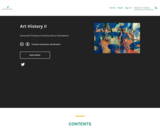
Table of Contents:
I. Chapter 1: Introduction
II. Chapter 2: Proto-Renaissance (1300–1400)
III. Chapter 3: 1400–1500—Art in Northern Europe
IV. Chapter 4: 1400–1500—Art in Italy
V. Chapter 5: 1500–1600—High Renaissance and Mannerism in Italy
VI. Chapter 6: 1500–1600—The Age of Reformation: Northern Renaissance Art
VII. Chapter 7: 1600–1700—Baroque Art in Italy
VIII. Chapter 8: 1600–1700—Baroque Art in Flanders, Dutch Republic, Spain and France
IX. Chapter 9: 1700–1800—The Age of Enlightenment
X. Chapter 10: 1800–1848—Industrial Revolution Part I
XI. Chapter 11: 1848–1907—Industrial Revolution Part II
XII. Chapter 12: 1907–1960—Age of Global Conflict Part I
XIII. Chapter 13: 1907–1960—Age of Global Conflict Part II
XIV. Chapter 14: 1960–Now—Age of Post-Colonialism Part I
XV. Chapter 15: 1960–Now—Age of Post-Colonialism Part II
XVI. Course Information
XVII. Textbook Online
XVIII. Meet the Class
XIX. Bulletin Board
XX. Icebreaker
XXI. Museum Project
XXII. Module 1 Renaissance Art
XXIII. Module 2 Baroque Art
XXIV. Module 3 Neoclassical and Romantic Art
XXV. Module 4 Impressionism and Later 19th Century Art
XXVI. Module 5 Early 20th Century Art and Architecture
XXVII. Module 6 1960–Now—Age of Post-Colonialism Part I, and II
XXVIII. Module 7 Globalism_Non-Western Art
XXIX. Module 8 Post Modernism Art Dealing with the Issues of Feminist Identity
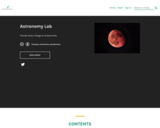
Table of Contents:
I. Lab 1- Sunrise, Sunset- Moonrise, Moonset
II. Lab 2 - Constellations and the Night Sky
III. Lab 3 - Light Pollution and Observing
IV. Lab 4 - About Your Eyes
V. Lab 5 - Scaling the Solar System
VI. Lab 6 - Optics and Telescopes
VII. Lab 7 - Solar System Storms
VIII. Lab 8 - Meteors, Meteorites, and Cratering
IX. Lab 9 - The Hubble Space Telescope
X. Lab 10 - Star Colors and Spectroscopy
XI. Lab 11 - H-R Diagram
XII. Lab 12 - Hubble's Law Origins
XIII. Lab 13 - Planetarium, Astronomy Club/Observing
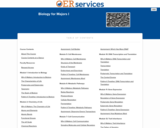
Module 1: Introduction to Biology
The Characteristics of Life
Prokaryotes and Eukaryotes
Taxonomy
The Study of Biology
Module 2: Chemistry of Life
Atoms and Elements
Atomic Bonds
Functional Groups
The pH Scale
Chemical Reactions
Thermodynamics
Assignment: Biological Astronaut
Module 3: Important Biological Macromolecules
Proteins
Lipids
Carbohydrates
Nucleic Acids
Comparing Biological Macromolecules
Assignment: Nutritionist for a Day
Module 4: Cellular Structure
Microscopy
Organelles
The Cytoskeleton
The Cell Surface
Assignment: Cell Builder
Module 5: Cell Membranes
Structure of the Membrane
Kinds of Transport
Endocytosis and Exocytosis
Assignment: Membranes Alive!
Module 6: Metabolic Pathways
Redox Reactions
Photosynthesis
Cellular Respiration
Fermentation
Assignment: Observing Energy Transactions
Module 7: Cell Communication
Signaling Molecules and Cellular Receptors
Propagation of the Signal
Response to the Signal
Signaling in Single-Celled Organisms
Module 8: Cell Division
Chromosomes and DNA Packaging
The Cell Cycle
Cell Cycle Checkpoints
Meiosis
Genetic Diversity
Errors in Chromosome Number
Assignment: Mitosis and Meiosis Internet Quests
Module 9: DNA Structure and Replication
Storing Genetic Information
DNA Base Pairs and Replication
DNA Mutations
Assignment: Which Has More DNA?
Module 10: DNA Transcription and Translation
Transcription
Translation
Prokaryotic Transcription and Translation
The Central Dogma
Module 11: Gene Expression
Regulation of Gene Expression
Prokaryotic Gene Regulation
Eukaryotic Gene Regulation
Assignment: How Mutations Work
Module 12: Trait Inheritance
The Father of Genetics
Beyond Dominance and Recessiveness
Heredity and Disease
Genetics and the Environment
Assignment: Dragon Genetics
Module 13: Theory of Evolution
Charles Darwin
Evidence for Evolution
Mutations and Evolution
Phylogenetic Trees
Module 14: Modern Biology
Key Technologies
Biotechnology Applications
Risks and Benefits of Genomic Science
Assignment: When Jabberjays Attack!
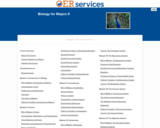
Module 1: Introduction to Biology
Characteristics of Life
Prokaryotes and Eukaryotes
Taxonomy
The Study of Biology
Module 2: Viruses
Viral Evolution, Morphology, and Classification
Virus Infections and Hosts
Prevention and Treatment of Viral Infections
Prions and Viroids
Module 3: History of Life
Evolution
Speciation
The Evolution of Populations
Phylogenies and the History of Life
Module 4: Prokaryotes
Prokaryotic Diversity
The Structure of Prokaryotes
Prokaryotic Metabolism
Bacterial Diseases in Humans
Beneficial Prokaryotes
Module 5: Protists
Characteristics of Protists
Groups of Protists
Ecology of Protists
Module 6: Fungi
Characteristics of Fungi
Classifications of Fungi
Ecology of Fungi
Fungal Parasites and Pathogens
Module 7: Plant Diversity
Seedless Plants
Seed Plants
Module 8: Plant Structure and Function
Plant Structures
Transport of Water and Solutes in Plants
Plant Sensory Systems and Responses
Plant Growth
Plant Nutrition
Module 9: Plant Reproduction
Reproductive Development and Structure
Asexual Reproduction in Plants
Sexual Reproduction in Plants
Module 10: Animal Diversity
Evolutionary History of the Animal Kingdom
Animal Phylogeny
Animal Form and Function
Animal Primary Tissues
Animal Reproduction
Homeostasis
Module 11: Invertebrates
Phylum Porifera
Phylum Cnidaria
Superphylum Lophotrochozoa
Superphylum Ecdysozoa
Superphylum Deuterostomia
Module 12: Vertebrates
Chordates
Fishes
Amphibians
Amniotes
Reptiles
Birds
Mammals
Module 13: Overview of Body Systems
Integration of Systems
Control Systems
Cell Maintenance Systems
Support Systems
Module 14: The Nervous System
Components of the Nervous System
Neuron Communication
The Central Nervous System
The Peripheral Nervous System
Nervous System Disorders
Module 15: The Endocrine System
Types of Hormones
How Hormones Work
Regulation of Body Processes
Endocrine Glands
Module 16: The Reproductive System
Reproduction Methods
Human Reproductive Anatomy
Hormonal Control of Human Reproduction
Fertilization
Early Embryonic Development
Human Pregnancy and Birth
Module 17: Sensory Systems
The Senses
Somatosensation
Taste and Smell
Hearing and Vestibular Sensation
Vision
Module 18: The Circulatory System
The Circulatory System
Structure and Function of Blood
The Mammalian Heart
Blood Flow and Blood Pressure Regulation
Module 19: The Respiratory System
Systems of Gas Exchange
Gas Exchange across Respiratory Surfaces
Breathing
Transport of Gases in Human Bodily Fluids
Module 20: The Immune System
The Innate Immune Response
The Adaptive Immune Response
Antibodies
Module 21: The Digestive System
Digestive Systems
Nutrition and Energy Production
Digestive System Processes and Regulation
Module 22: The Excretory System
Osmoregulation and Osmotic Balance
Kidneys and Osmoregulatory Organs
Excretion Systems
Module 23: The Musculoskeletal System
Skeletal Systems
Bones
Joints and Skeletal Movement
Muscle Contraction and Locomotion
Module 24: The Integumentary System
Structure and Function of Skin
Accessory Structures of the Skin
Functions of the Integumentary System
Diseases, Disorders, and Injuries of the Integumentary System
Module 25: Ecology of Living Things
The Scope of Ecology
Biotic and Abiotic Factors
Biomes
Population Ecology
Community Ecology
Module 26: Ecology and the Environment
Energy in the Environment
Biogeochemical Cycles
Climate Change
Conservation Biology and Biodiversity
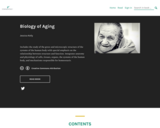
Includes the study of the gross and microscopic structure of the systems of the human body with special emphasis on the relationship between structure and function. Integrates anatomy and physiology of cells, tissues, organs, the systems of the human body, and mechanisms responsible for homeostasis.
Also available here:https://courses.lumenlearning.com/atd-herkimer-biologyofaging/
Table of Contents:
I. Chapter 1: Introduction to Human Aging
II. Chapter 2: Theories of Aging
III. Chapter 3: Cellular Aging
IV. Chapter 4: The Integumentary System
V. Chapter 5: Bone Tissue and The Skeletal System
VI. Chapter 6: The Skeletal Muscle System
VII. Chapter 7: The Nervous System
VIII. Chapter 8: The Special Senses
IX. Chapter 9: The Circulatory System
X. Chapter 10: The Immune System
XI. Chapter 11: The Respiratory System
XII. Chapter 12: The Digestive System
XIII. Chapter 13: The Urinary System
XIV. Chapter 14: The Reproductive System
XV. Chapter 15: The Endocrine System
XVI. Course Information
XVII. Term Research Project
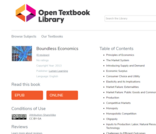
This catalog contains educational content originally curated by Boundless. In collaboration with the Boundless team, Lumen Learning imported these OER courses to the Lumen Platform, to ensure they remain freely available to the education community after Boundless ceased operations. Lumen maintains the Boundless content in the same condition it was provided to us. Courses may contain issues with formatting, accessibility, and the degree to which content remains current, accurate, and complete.
Table of Contents
Principles of Economics
The Market System
Introducing Supply and Demand
Economic Surplus
Consumer Choice and Utility
Elasticity and its Implications
Market Failure: Externalities
Market Failure: Public Goods and Common Resources
Production
Competitive Markets
Monopoly
Monopolistic Competition
Oligopoly
Inputs to Production: Labor, Natural Resources, and Technology
Challenges to Efficient Outcomes
Taxes and Public Finance
Income Inequality and Poverty
Introduction to Macroeconomics
Measuring Output and Income
Economic Growth
Inflation
Unemployment
Inflation and Unemployment
Aggregate Demand and Supply
Major Macroeconomic Theories
Fiscal Policy
The Monetary System
Monetary Policy
The Financial System
Current Topics in Macroeconomics
International Trade
Open Economy Macroeconomics
Economic Crises
Interest
Health Care Economics
Natural Resource Economics
Agriculture Economics
Immigration Economics
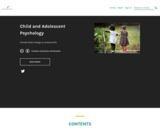
Table of Contents:
I. Faculty Resources
II. Module 1: The Field of Child Psychology
III. Module 2: The Dawn of a Person
IV. Module 3: Physical Development
V. Module 4: Cognitive Development
VI. Module 5: Emotional and Self Development
VII. Module 6: Social Development
VIII. Attributions

This course is aimed at beginning to intermediate computer users. It teaches a range of computer skills from the basics of using Windows, to basic internet literacy, to creating projects using Microsoft Office. Assignments show step-by-step visuals to help students complete projects, and include integration across Microsoft Word, Excel, PowerPoint, and Access.
This course was developed by Lumen Learning in conjunction with Cerritos College, with contributing work from Sherri Pendelton, Shelli Carter, and Robert Danielson, as well as videos from multiple sources.

Student Learning Outcomes:
Assess health behavior choices, apply that information to everyday life for the improvement of individual, family, and community well-being.
Identify preconceived ideas about knowledge, values, and behavior that affect health and compare with established research and accepted scientific evidence.
I. Objectives
II. 1. Introduction to Personal Health
III. 2. Nutritional Health
IV. 3. Personal Relationships and Violence
V. 4. Human Sexuality, Contraception, and Reproduction
VI. 5. Physical Activity
VII. 6. Substance Abuse and Addictions
VIII. 7. Aging, Dying, and Death
IX. 8. Diseases and Disorders
X. Faculty Resources
XI. Course Information
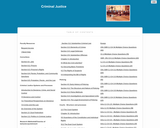
Corrections
Introduction to Deviance, Crime, and Social Control
An Overview of the System
Research Methods & Theories of Behavior/Punishment
Justice and the Law
Policing
Courts - Structure and Processes
2.3 The Court System
Sentencing
3.6 Excessive Punishment
Section 2.5: Theories of Punishment
Section 5.5: Sentencing
Quizzes and Assessments
Available as an e-book here: https://library.achievingthedream.org/bmcccriminaljustice/